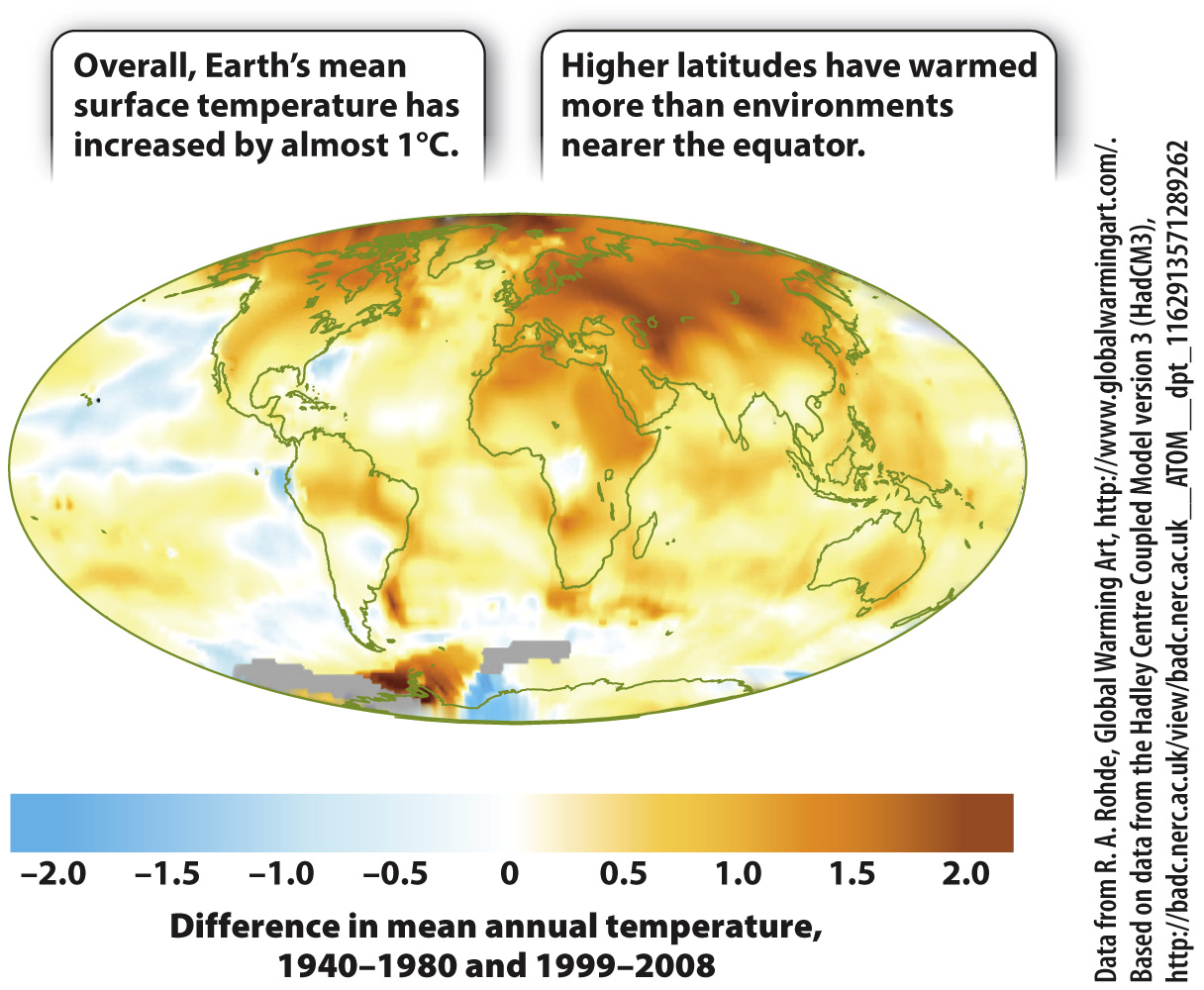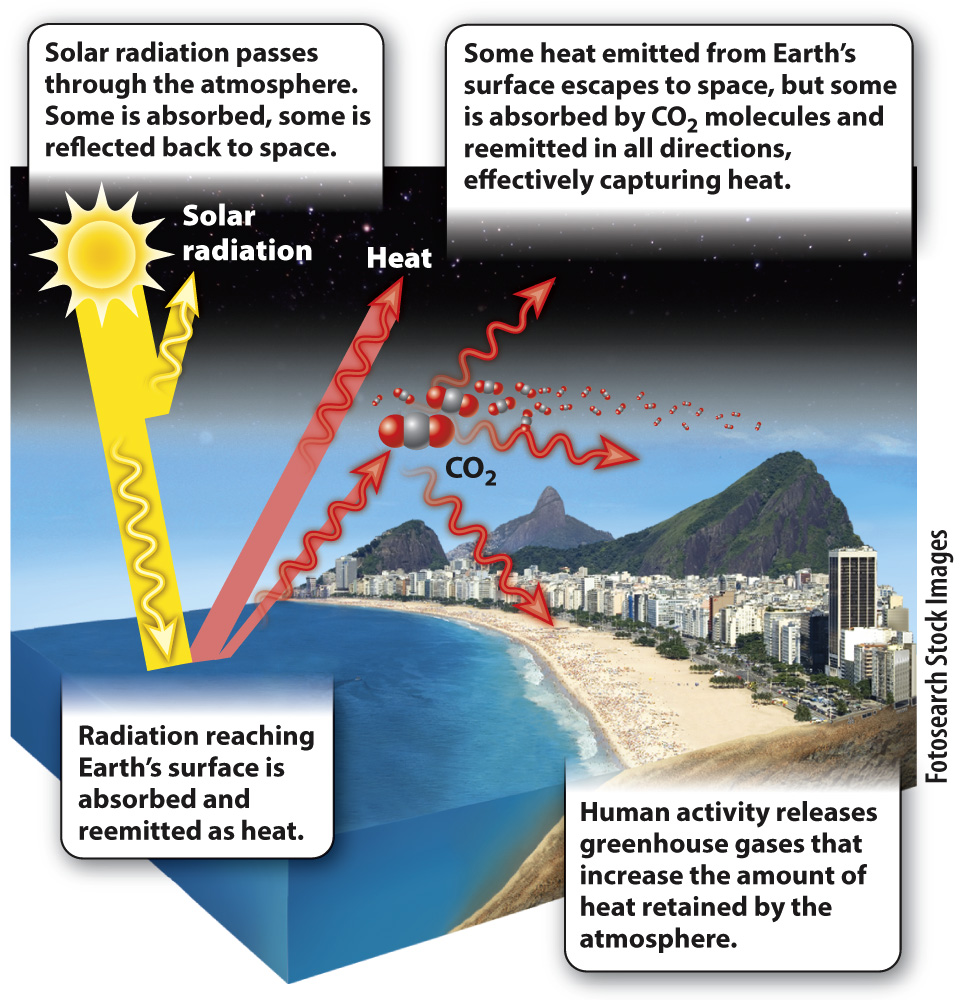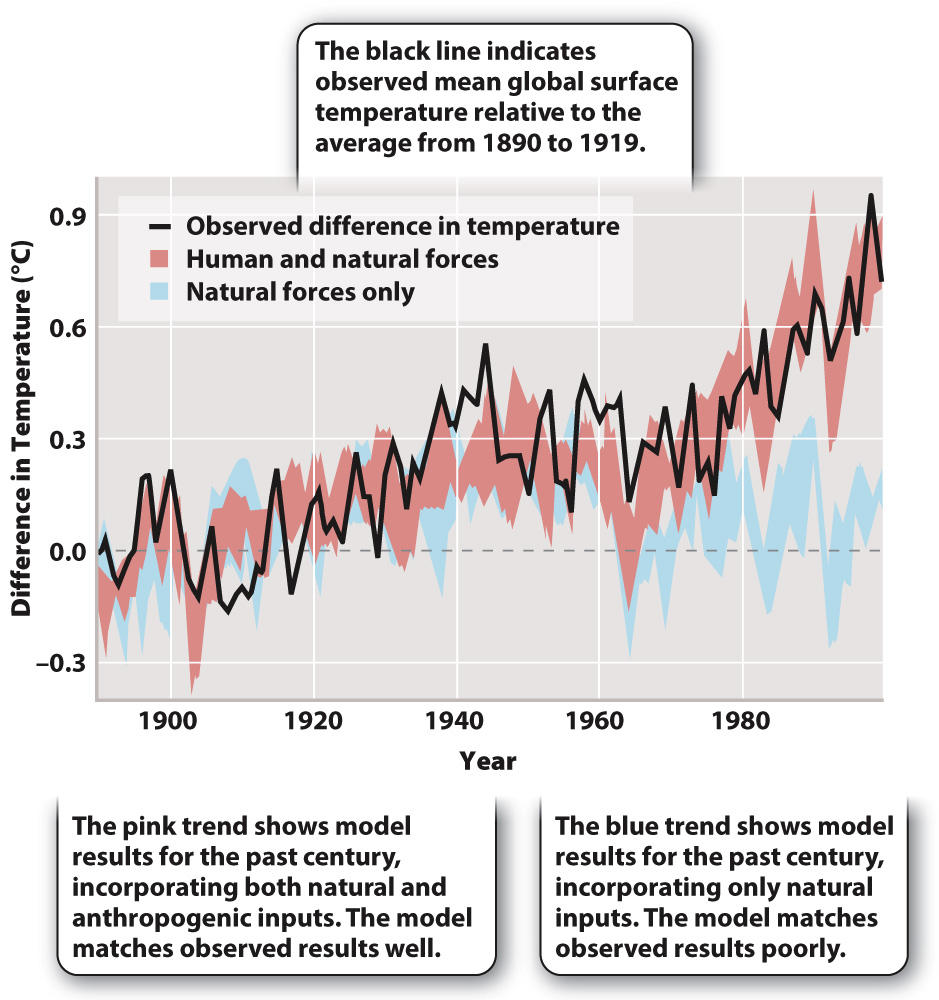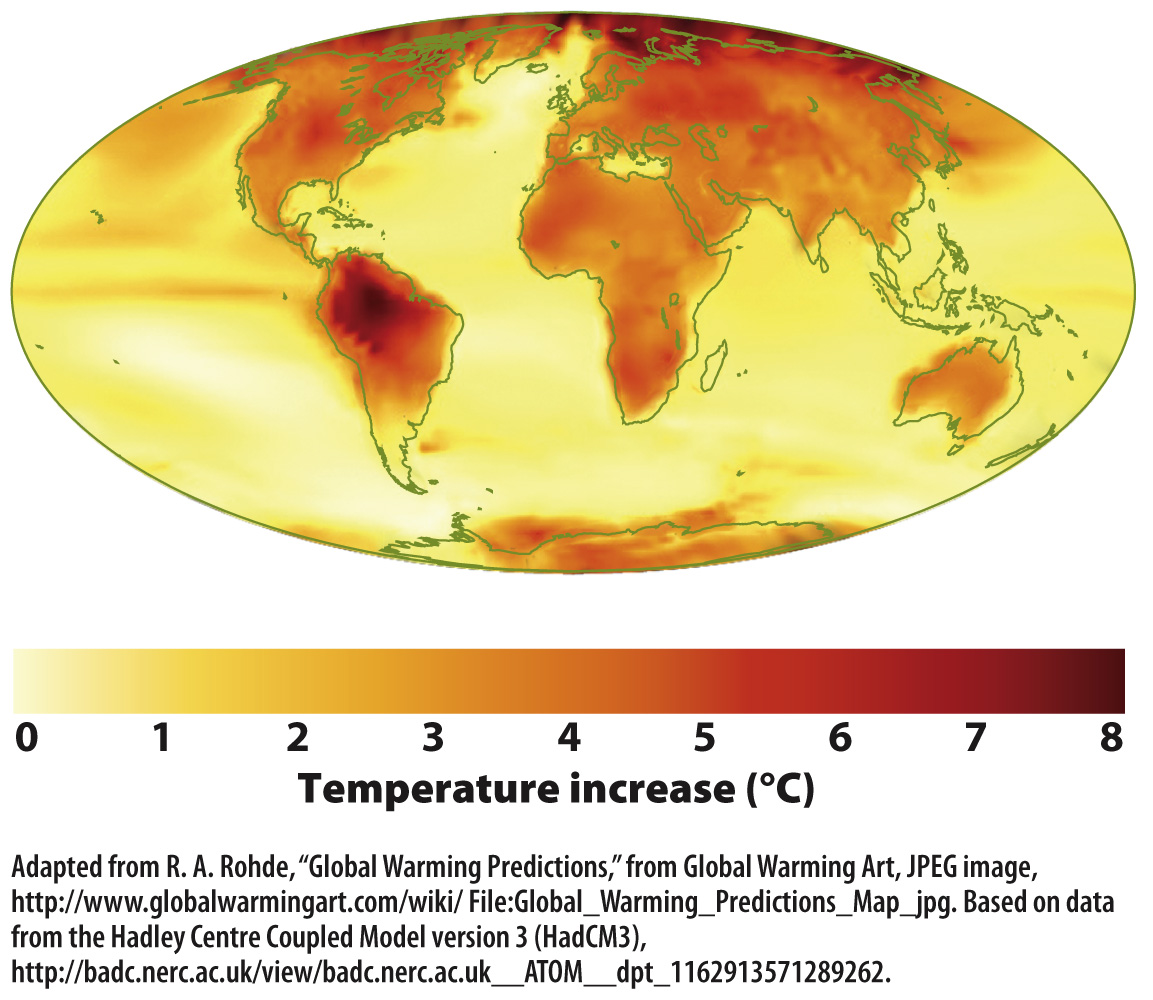As atmospheric carbon dioxide levels have increased, so has mean surface temperature.
For the past century, scientists, sailors, and interested citizens have monitored temperature at weather stations around the world. More recently, satellites have enabled us to measure temperature in places as remote as the high Arctic and the middle of the ocean. The results are clear: In most parts of the world, mean annual temperature during the decade 1999–

We can measure CO2 levels in the atmosphere, and they are increasing. We can measure global temperature, and it is increasing. Is increasing CO2 responsible for observed temperature changes? To address this question, we must understand that carbon dioxide is a greenhouse gas—that is, a gas that absorbs heat energy and then emits it in all directions. As shown in Fig. 49.6, solar radiation passes freely through the atmosphere, from top to bottom. Some incoming radiation is reflected from Earth’s surface, and the rest is absorbed by the land and sea. In turn, some of the energy absorbed by Earth’s surface is radiated back again as infrared radiation, or heat. Greenhouse gases in the atmosphere absorb the infrared radiation reflected up from Earth’s surface and emit it in all directions—

Carbon dioxide is only one of several important greenhouse gases in the atmosphere—
Physics can help us determine how much atmospheric warming is due to increases in greenhouse gases. Each molecule of greenhouse gas absorbs and emits a specific amount of heat, and calculations show that the increases in atmospheric greenhouse gases measured over the past 50 years have increased the difference between incoming (solar) and outgoing radiation by about 2.5 watts per square meter. This difference is what adds heat to the oceans and atmosphere. Scientific consensus, reflected in reports from the Intergovernmental Panel on Climate Change, is that this greenhouse effect is the principal cause of observed twentieth-
If this view is correct, human activities are changing the world. Can we, however, eliminate the possibility that the observed increases in greenhouse gases and temperature have natural causes? After all, as we saw in Chapter 25, the long-
Moreover, we can monitor the effects of volcanoes as they occur, and we can gauge the effects of past eruptions because volcanic ash accumulates along with the ice in continental glaciers. Historically, the major effect of large volcanic eruptions has been to decrease temperature because volcanic ash and aerosols reflect incoming solar radiation back into space. What’s more, the impact of volcanic eruptions lasts only a few years. It doesn’t drive the century-
What about the possibility that the amount of solar radiation entering the atmosphere has varied through time? The sun’s output oscillates, and we know from direct measurements how solar radiation has varied during the past 50 years. The effect of this variation can be calculated, and it is small relative to greenhouse effects. It does not seem that variable solar radiation can account for the amount of temperature change that we have observed. In short, natural processes alone cannot explain the temperature increases observed in recent decades (Fig. 49.7).

As a result, there is overwhelming agreement among scientists that atmospheric CO2 levels are rising, that temperature is increasing, and that the physics of greenhouse gases relates the two effects. Beyond these facts, however, it is difficult to say with certainty how human-
Why don’t we know for certain? Modeling future climatic conditions is difficult because of the many complex interactions that contribute to climate. Climate models are attempts to understand how climate works by fashioning equations that relate a simplified set of variables and interactions. Using mathematical models that accurately approximate current climate, scientists can change inputs into the model, adding CO2 to the atmosphere, for example, or changing the extent of forest cover. The model then generates a set of results that can be used to predict future climate. All models must be checked against actual observations, and most are sensitive to assumptions made in constructing the model. That said, climate models do a pretty good job of explaining global-
Nevertheless, questions remain. How, in detail, might cloud cover change over the next century, and what effect would this change have on temperature and precipitation? What will be the effect of additional air pollutants, like the black carbon particles released into the air when coal or wood burns incompletely? Will black carbon increase warming by absorbing solar radiation, or decrease it by reflecting radiation back into space? What will be the quantitative effects of feedbacks such as the release of methane and carbon dioxide as warming temperatures melt permafrost at high latitudes? How will oceanic and atmospheric circulation patterns change, and will any changes that may occur enhance or dampen climatic change?
We still seek definitive answers for all these questions. Nonetheless, most climate models suggest that mean global temperature will increase 2°C–

As discussed in Chapter 48, climate can be considered as average weather over a long time interval. From one year to the next, however, weather is tremendously variable—
Models predict that rainfall patterns should change as Earth warms. To test this, oceanographers analyzed 1.7 million measurements of seawater salinity taken over the past century. The oceans were chosen because they contain 97% of our planet’s water and receive 80% of its rainfall. The salinity of surface seawater reflects both the addition of fresh water by rain, which decreases salinity, and evaporation, which increases it. For this reason, changing salinity can indicate whether the balance of rainfall and evaporation is shifting over broad regions of Earth. Consistent with many model predictions, wet areas of Earth are becoming wetter and dry regions drier.
Quick Check 2 What is the difference between global warming and the greenhouse effect?
Quick Check 2 Answer
Global warming is the measured increase in Earth’s surface temperatures over the past 50 years. The greenhouse effect describes a process by which global warming can occur. The greenhouse effect is the result of the capacity of some molecules—